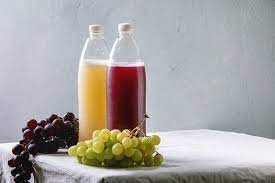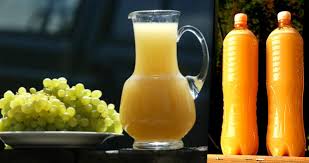
If you happen to be in this beautiful country in Fall, you may often see small stalls flanking the streets and roads of Czech cities offering something that looks like wine. This will certainly what the Czechs call “burčák, the partially fermented young Moravian wine that appears on the market at the end of August and early September and stays till end of October.

Burčák is an inseparable part of the fall in the Czech Republic, especially in the South Moravia region. It is served at wine festivals throughout the season. Czechs have a very strong, traditional relationship with this local drink. It is a traditional Moravian beverage. Though Austrians and Germans produce and consume young wine as well, Czechs are the only ones having burčák. The name is even protected under legislation within the European Union. Following EU accession, the only true burčák comes strictly from Moravian or Bohemian grapes.
How is burčák made?
The process of making burčák is rather simple. During the wine harvest, freshly squeezed grape „cider“ is filtered and made free from any impurities and dregs. The ideal burčák is ready after three or four days of fermentation when the total amount of sugar is „just right“. Typically, it is a sweet, cloudy, low-alcohol drink (5-7%) of yellowish color. Since the wine is still fermenting burčák must be consumed very quickly, ordinarily within 1 or 2 days after you buy it.
Even some health benefits
As long as you don’t drink too much burčák, it is considered to be good for your health thanks to its high amount of yeast. It is thus rich in B vitamin. Locals tend to say it is beneficial for your hair, nails, skin and even nervous system. Supposedly, you can’t expect to be healthy unless you drink at least seven liters of the young wine each year. Good luck!If you decide to get a bottle of burčák just keep this advice in mind:
- Burčák is fermenting, therefore producing CO2. Don’t tighten the top of the bottle otherwise it can easily explode after a couple of hours.
- The best time to consume burčák is within a day or two. As fermentation continues, the amount of sugar is decreasing so the beverage is not as tasty as before.
- Even though it tastes like lemonade don’t forget there is alcohol in it so don’t overdo it
- The best-quality burčák is usually found at an authentic wine-store rather than street stalls




Thank you for your reading. Join the conversation by posting a comment.